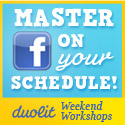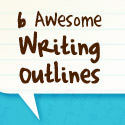The ultimate remedy for writing motivation is a topic many have blogged about before. We all know the things that we are supposed to do like make time in our schedules for writing, use prompts and other exercises to jumpstart your creative juices, yada, yada, yada. Instead of re-iterating the standard prose on writing motivation, I thought I’d do something a little different to spur us writer folk into action.
I’m going to tell you what NOT to do to find your writing motivation.
DO NOT turn on the TV. You start out telling yourself you’ll watch the first five minutes of the news—after all, they’re doing a story about the germs lurking in the corners of your kitchen, you can’t miss that, right? But after the national news goes off, it’s time for Wheel of Fortune and Jeopardy—who can miss those? Game shows keep your mind sharp! After game shows there are sitcoms and dramas and Wipeout and basketball games and Mythbusters and 400 other channels full of distractions. Next thing you know it’s after midnight and you’re passed out on the couch in the middle of a Pawn Stars marathon. The TV is a gateway drug and at least a few nights a week, you have to avoid turning it on because the moment you press the power button, it’s over.Continue Reading



 Good writing. Hard work.
Good writing. Hard work.
 We're
We're 








